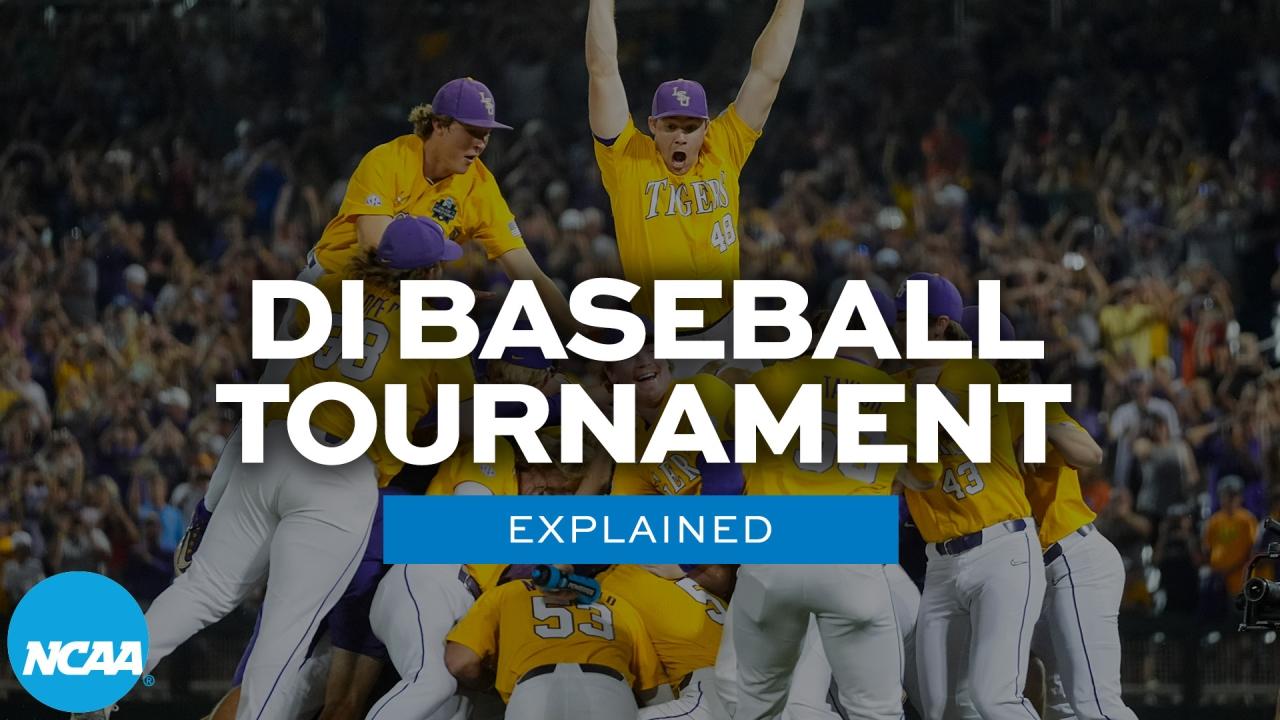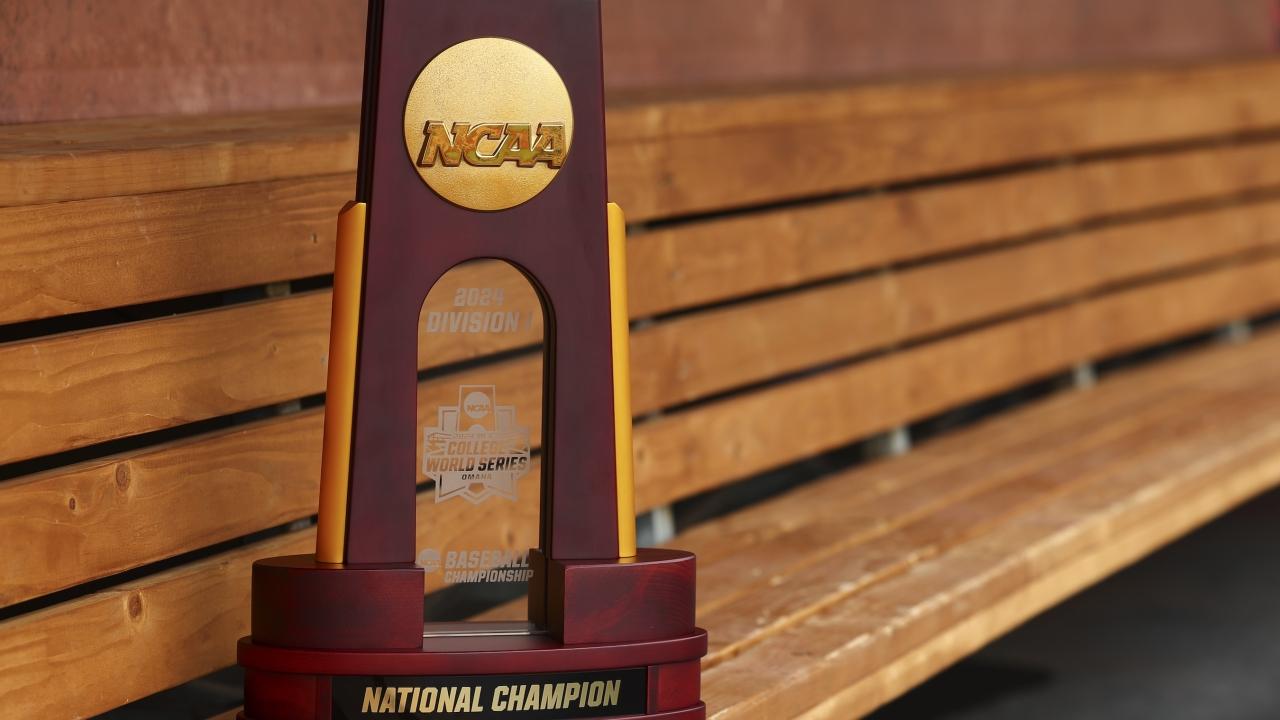## The Pressure Cooker of Omaha: Cracking the Code of the Men’s College World Series
The roar of the crowd, the crack of the bat, the dust swirling in the air – the Men’s College World Series isn’t just a baseball tournament, it’s a spectacle. A culmination of months of hard work, underdog stories, and nail-biting finishes, it’s where legends are made and dreams are shattered. But with its unique format and high stakes, the College World Series can be a confusing beast for the uninitiated.

Omaha Bound

The roar of the crowd echoes through the stands, a sea of red and white swaying in unison. The scent of popcorn and freshly cut grass hangs in the air. It’s Omaha, Nebraska, and the stage is set for the pinnacle of collegiate baseball: the Men’s College World Series. Charles Schwab Field, a state-of-the-art ballpark nestled in the heart of the city, has been the home of the CWS since 1950, witnessing countless unforgettable moments and etching itself into the fabric of baseball history.
From its humble beginnings in 1947, when just eight teams battled it out in Kalamazoo, Michigan, the CWS has evolved into a sprawling spectacle that captivates fans nationwide. Over the decades, the tournament has transformed, expanding its field, adopting new formats, and solidifying its position as the ultimate test of college baseball prowess.
The history of the CWS is a tapestry woven with legendary teams, iconic coaches, and heart-stopping moments. Every year, the best collegiate players in the country converge in Omaha, chasing their dreams of national glory, leaving behind a legacy that will inspire generations to come.
Double-Elimination Drama
The Pressure Cooker of Omaha
The double-elimination format, the lifeblood of the CWS, infuses the tournament with an electrifying tension. Teams arrive in Omaha with a singular goal: to survive. Each loss brings them closer to elimination, creating a pressure-cooker environment where resilience, adaptability, and clutch performances are paramount.
The double-elimination format fosters a unique sense of unpredictability. Cinderella stories emerge, as underdog teams claw their way through the losers’ bracket, fueled by the hope of a second chance. Upsets become commonplace, shattering expectations and keeping fans on the edge of their seats.
Memorable Moments of Resilience
Countless CWS moments have etched themselves into the annals of college baseball history, testaments to the drama and intensity of the double-elimination format. In 2017, Florida State emerged from the losers’ bracket to claim the national championship, battling back from a 2-game deficit to conquer the favored LSU Tigers.
The 2011 CWS saw Virginia Tech, a team that had been on the brink of elimination, stage an improbable comeback against the heavily favored UCLA Bruins. The Hokies’ resilience and determination defied the odds, showcasing the unpredictable nature of the double-elimination format.
Seeking National Glory: The Championship Series
Best-of-Three Battles
The culmination of the CWS, the best-of-three championship series, is a crucible where the dreams of two teams converge. The pressure is immense, the stakes are astronomical, and every pitch carries the weight of a season’s worth of work.
The best-of-three format introduces a strategic layer to the championship series. Bullpen management becomes paramount, as teams carefully navigate the delicate balance between rest and freshness for their relievers. The psychological impact of winning or losing a game adds another dimension to the series, influencing momentum swings and shaping the overall narrative.
Memorable Championship Clashes
The history of the CWS championship series is littered with unforgettable clashes. In 2001, LSU and Stanford engaged in a thrilling back-and-forth series, with each team battling valiantly for the national title. LSU ultimately triumphed, but the series showcased the heart and determination of two teams at the pinnacle of their sport.
The 2013 championship series between UCLA and Arkansas was another classic, with both teams showcasing their offensive and defensive prowess. UCLA emerged victorious, but the series served as a testament to the intensity and competitiveness of the CWS championship.
Legacy and Legends
The Lasting Impact of the CWS
The Men’s College World Series transcends the realm of sports; it’s a cultural phenomenon that has cemented its place in American history. The tournament has served as a launching pad for countless careers, catapulting players to the Major Leagues and etching their names in the annals of baseball lore.
The CWS has also fostered rivalries that have become ingrained in the fabric of college baseball. Texas and Texas A&M, Florida and LSU, and Oregon State and Vanderbilt are just a few of the storied rivalries that have been forged on the hallowed grounds of Omaha.
Iconic Teams and Coaches
The CWS has been graced by the presence of legendary teams and coaches who have left an indelible mark on the tournament’s history. The 1984 USC Trojans, led by coach Rod Dedeaux, are considered one of the greatest college teams of all time, their dominance culminating in a national championship.
Other legendary coaches, such as Pat Casey of Oregon State and Tim Corbin of Vanderbilt, have guided their teams to multiple CWS titles, earning their place among the pantheon of collegiate baseball greats.
Conclusion
So there you have it: the Men’s College World Series, a crucible of talent, strategy, and sheer grit where the nation’s best collegiate baseball teams battle for ultimate glory. From the grueling regional and super regional rounds to the thrilling culmination at TD Ameritrade Park in Omaha, the journey is a testament to the dedication and passion of these young athletes. Understanding the intricate structure of this tournament, the journey each team undertakes, and the historical significance it holds allows us to fully appreciate the magnitude of this sporting spectacle. The Men’s College World Series isn’t just about baseball; it’s a microcosm of the American dream. It showcases the power of teamwork, the pursuit of excellence, and the unwavering spirit that defines the collegiate experience. As we witness these future stars clash on the diamond, we’re reminded of the transformative power of sport and its ability to inspire generations to come. The echoes of each swing, each catch, and each victory reverberate far beyond the stadium walls, leaving an indelible mark on the landscape of college baseball and the hearts of fans nationwide. Who will rise to the occasion this year, etching their names in the annals of college baseball history? The only way to find out is to tune in and witness the magic unfold.
